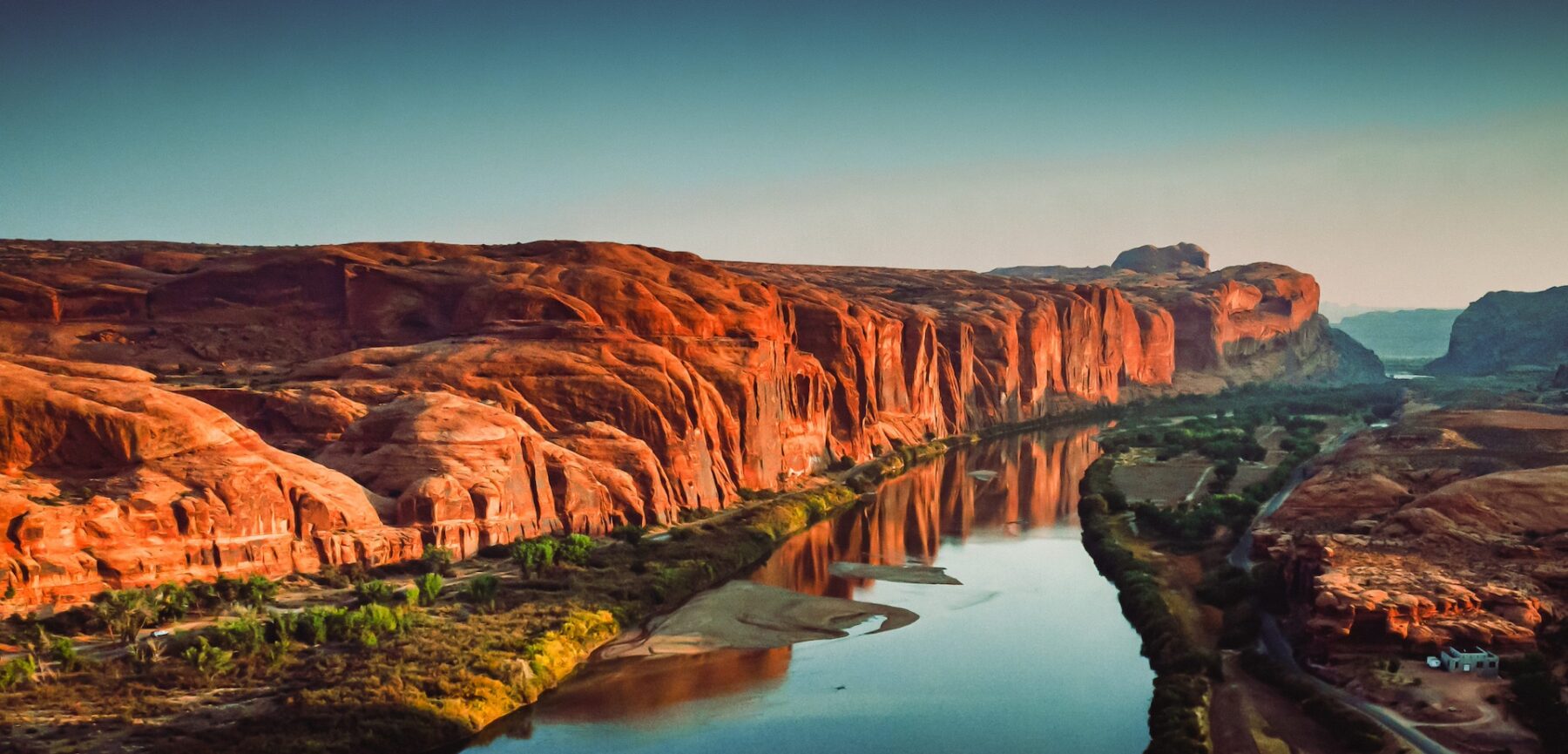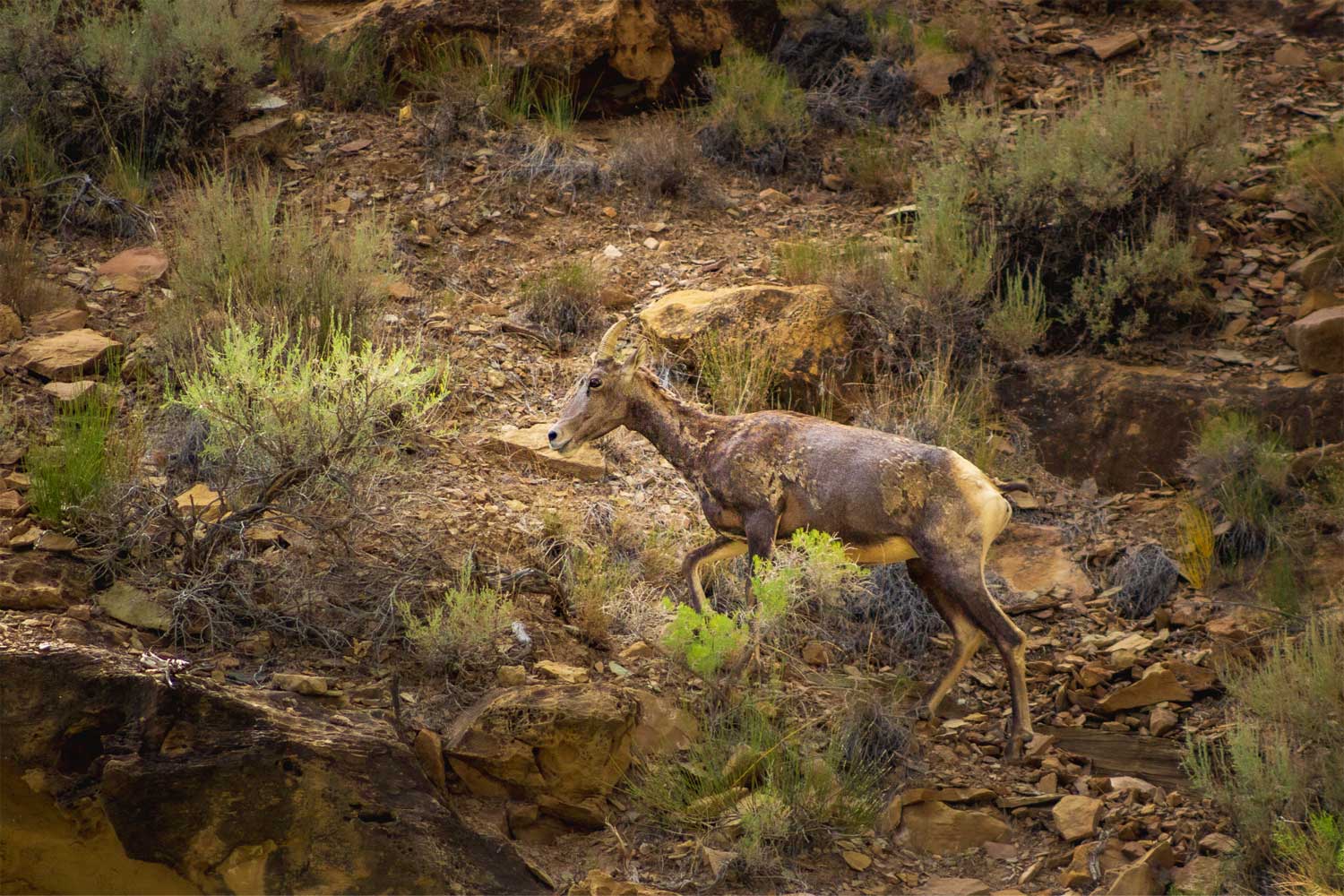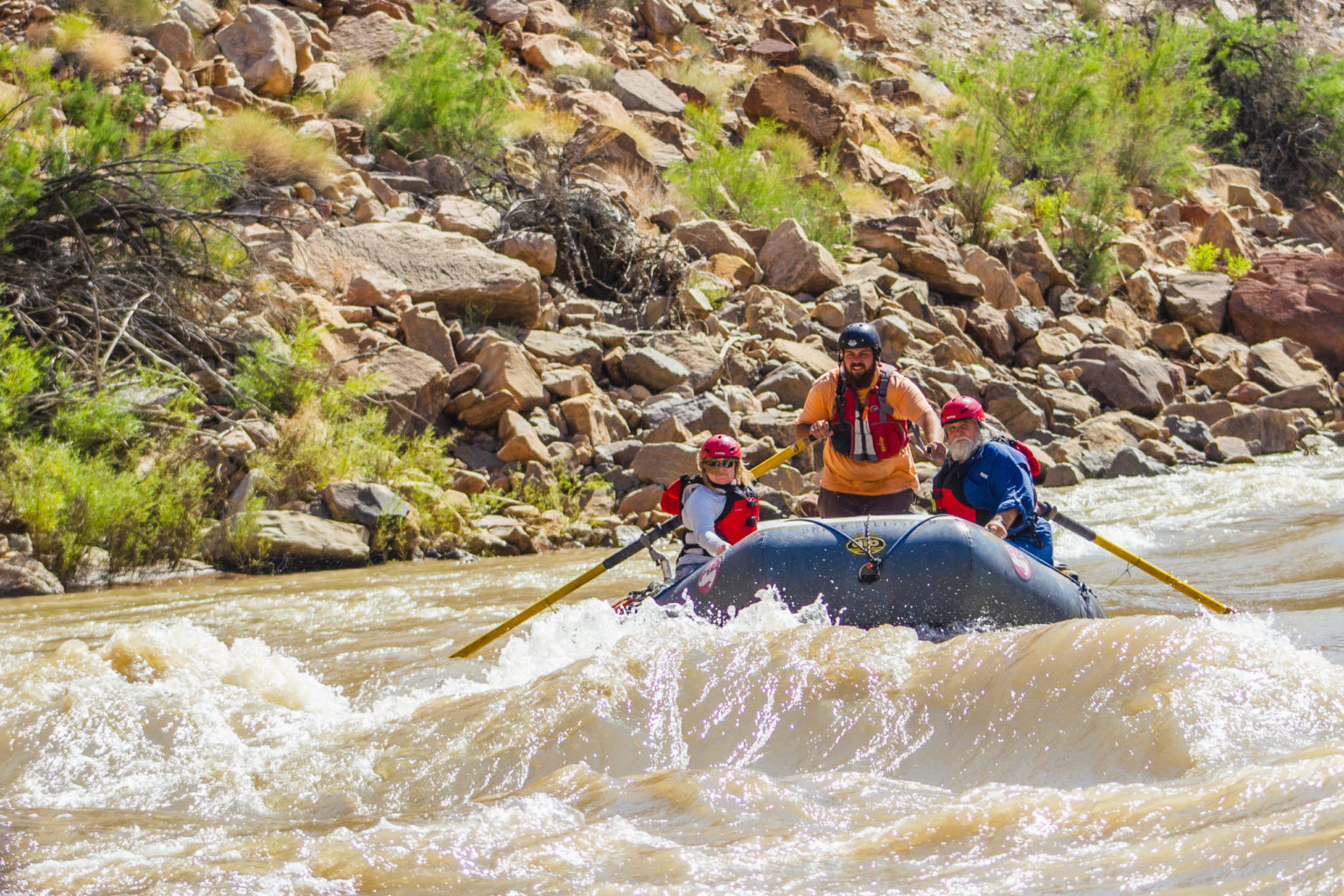
There’s a lot of things to love about Moab during the fall. First, the temperatures in and of themselves are reason to rejoice for the changing seasons (especially for the locals who have endured degrees that reach over 110 by June!). Next, the subsiding of crowds that can flood into Moab during spring and summertime. Not to say that things completely wind down, since autumn is when Moab has most of its fabulous festivals and sporting events. Read on to see what other amazing fall phenomena take place in Moab, you might be surprised by how much changes in the desert when the days get shorter and things cool off!
The Sky is Bluer
In the rural Southwest, the sky is always unapologetically flamboyant with color, whether it’s from a sinking sun that splatters the horizon with tangerine and magenta, or a midday cobalt that makes your eyes feel bamboozled by the saturation. The culprit to such bragging rights? A combination of low humidity in higher elevation. So not only is the sun physically closer to Moab at 4,026 feet, there’s hardly any water in the air to dilute the light beaming through the atmosphere.
And the atmosphere has much to do about blue-colored wavelengths, which are the shortest on the color spectrum. Because of this, blue scatters more easily once light enters Earth’s bubble, also known as Rayleigh Scattering. It’s why the sky is blue in the first place!
When the fall season begins in the Northern Hemisphere, the sun is closer to the horizon and in turn has more atmosphere to beam its light across— and more atmosphere means more particles to bounce light waves off of. Consequently, fall and winter is really blue’s time to show its true colors, per se.
The Rocks are Redder
If you read the info above, you’re already privy to the essence of light scattering. Now when it comes to the color red, its wavelength is twice as long as blue’s. This makes it 16 times less subservient to being bounced around by atmospheric particles because it doesn’t charge them as much as colors with a higher frequency.
When sun rays have to travel farther across the atmosphere, they pick up the longer wavelengths of the color spectrum. So all the times we’ve stopped to gawk at a flaming sunset, we’re really just admiring the horizontal light beams that give longer wavelengths the time they need to scatter across the sky.
That’s why Moab’s red rocks are more vibrant in autumn light, because the sun sits at an angle towards the ground for the entire day. Also, this lower angle slightly shortens red wavelengths, giving them a higher frequency for particles to reflect back into our scenery-stricken eyeballs, per Forbes.
The Night Sky Gets Lit — Lit-Literally

Autumn marks the beginning of the observation season for astronomers. During the season’s change, the Earth floats away from facing the center of the galaxy. While you might be thinking that that seems counterintuitive, looking towards the center of the Milky Way actually clouds our visibility to the cosmos. This is due to the intergalactic dust floating between millions of faraway stars and planets.
From fall to spring, our planet (which sits more towards the outer bands of the galaxy) faces towards the edge of our little universe— making our celestial neighbors more clear to naked eye. Fall is also when Earth passes through the most dense section of the cosmic stream, which means it’s one of the best times to see meteor showers. Check out the various meteor showers that happen during fall and the peak times to catch them at The International Meteor Organization.
Changing seasons also means that certain constellations will make a fresh appearance. Fall has plenty of exclusive constellations, like the Great Square of Pegasus linked up to our neighbor, the Andromeda Galaxy. This galaxy is the most distant object visible to the naked eye, per Constellation Guide. And you’ll probably see it more clearly around Moab! Because this little desert town is roosted between to TWO Dark Sky Parks— Canyonlands and Arches National Park— making the nights even more primed for stargazing during the fall.
More Wildlife Comes Out
Fall is a pretty active time in Moab for various animals. As you probably already know, black bears will start packing on the fluff as they prepare for hibernation by early November. Bear sightings aren’t exactly as common as other wildlife in the area as they tend to stay in more remote, creek-cut canyons when they mosey down from the La Sal and Abajo Mountains.
According to NPS, you might spot a black bear in Salt Creek Canyon in Canyonlands or along the Colorado River, especially during their fall forages. If you do happen to come across a black bear during fall in Moab, definitely keep your distance. They’re behavior this time of year tends to be more forthcoming— just like anyone else who might be in the middle of stress eating! Visit the NPS link above for more information on how to prevent bears from gorging in your camp and what to do if you encounter one.
Harvest season also takes on another meaning for Moab’s wildlife as bighorn sheep and deer begin a rigorous campaign of courtship. Mating, aka rut season, for bighorn sheep in particular brings males in search for ewes, and the ewes in search of new grazing areas after the summer monsoons. According to the Moab Sun News, great places to find bighorns in the fall are in Castle Valley, Dead Horse State Park, and Canyon Rims Recreational Area outside of the Needles District of Canyonlands National Park.
The Colorado River Gets a Bit of a Bump
While every year is different, Moab tends to get a few more drizzles in fall. Now, to non-desert-dwelling folks, a couple of inches of rainfall might seem insignificant, but it’s usually enough to give the Colorado River a small boost in CFS (cubic feet per second) after the flows make a steep drop in August.
The amount of water is different every year, of course, but the pattern of pitter-patters during the fall months in Moab tends to stay fairly consistent (as much as we could ask for in an area as topographically diverse as Moab anyway!). This means it’s a great time to get the last few splashes of rafting season in before it’s too frigid to actually enjoy oneself!
Commercial trips on the Colorado in Utah last until the end of October through Westwater, Castle Valley and Cataract Canyon. What’s even better is that this is the beginning of the off season for outfitters, which means there’s less people to share boats and beaches with. Fall river trips in Moab promise far more solitude and special moments to yourself in this extremely popular red rock wilderness.
More Reading
Top 4 Fall Rafting Trips Utah’s Magical Deserts Have to Offer
The Fall Photography Road Trip that Reigns Supreme for Southwest Foliage



